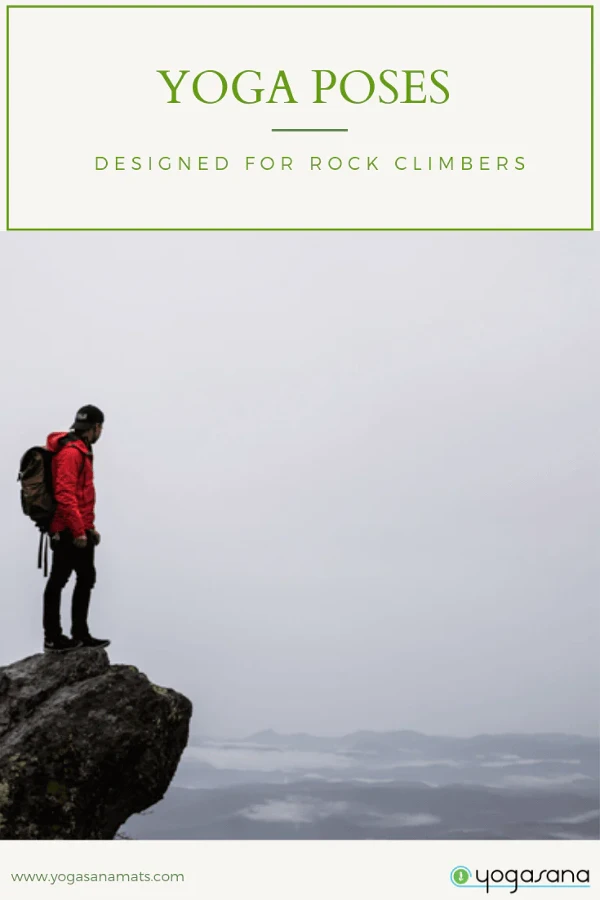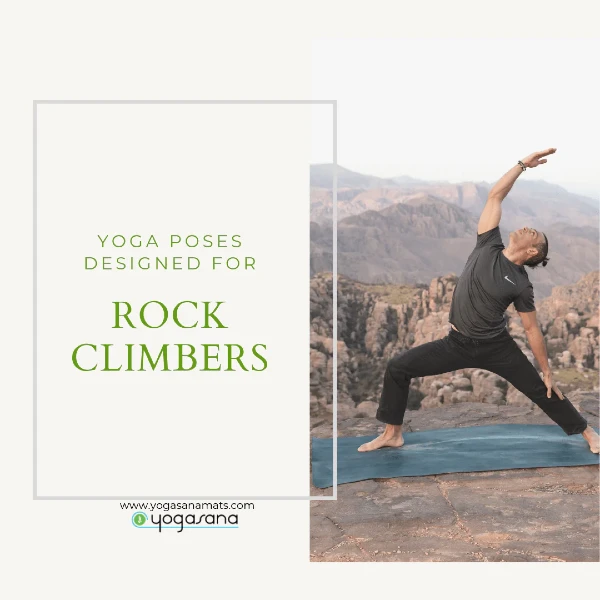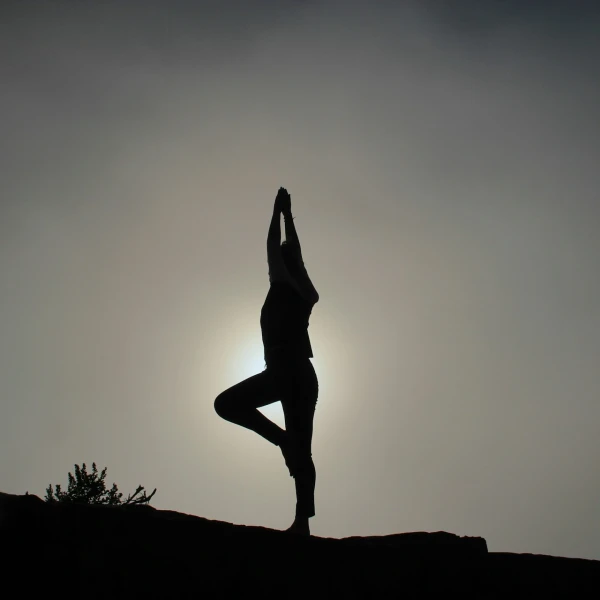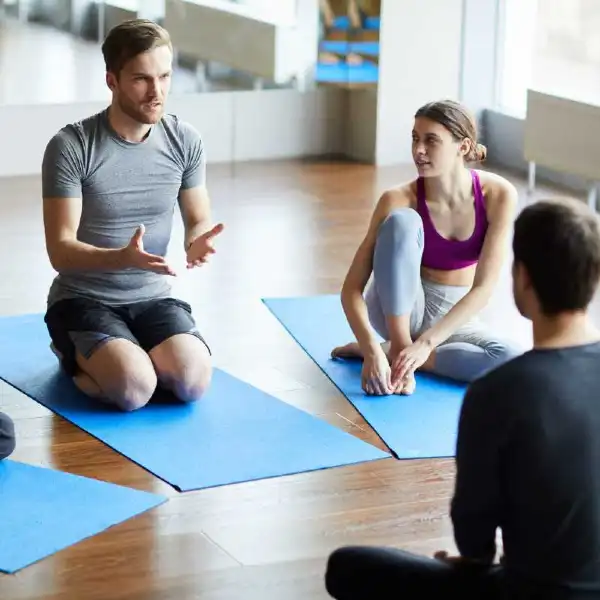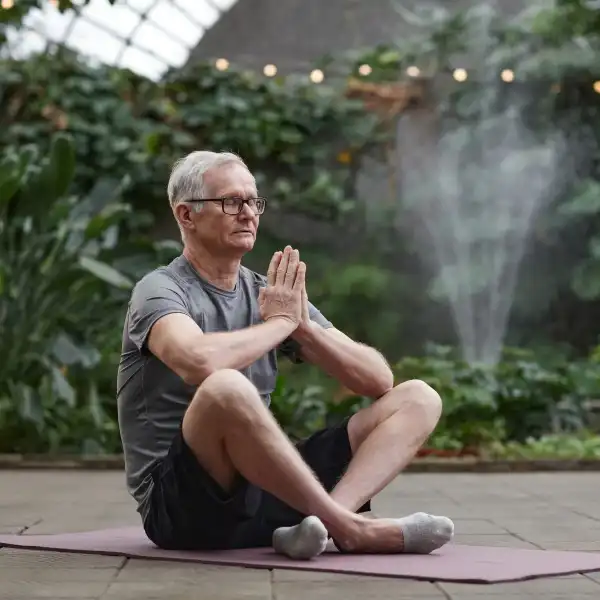Climbing And Yoga A Perfect Pairing
Whether you’re an avid rock climber or toying with the idea of touching your first ever belay system, yoga can help you reach new heights, both literally and figuratively.
Rock climbing and yoga reinforce the mind-body connection through similar types of movement.
Here are 6 yoga poses that while not specifically designed for rock climbers, that will make your mind and body work in unison and climb effortlessly
1. Warrior I Pose
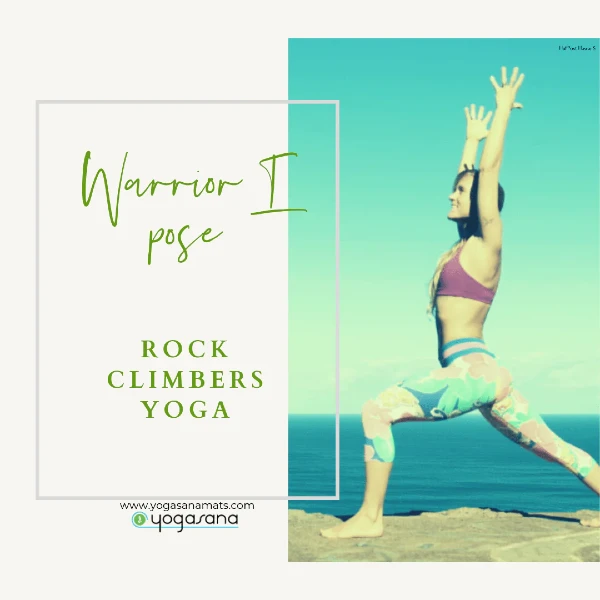
Warrior I is one of yoga’s foundational poses, but getting the alignment right can be a little tricky. It teaches you balance and to be more aware of your body positioning. This is how you can achieve the pose; reach your left leg back and bend your right knee directly over your right ankle. Place your left foot flat at a 45-degree angle. Make sure your right ankle and foot are at a 90-degree angle (pointing forward) and that your right heel is aligned with your left heel. (People with ankle problems may lift the heel, and balance on the toes). Draw your right, outer hip back, and align your right thigh parallel to the ground. Lift your torso and arch your upper back slightly, raising arms overhead. Point fingers up with palms facing together. Lift your rib cage away from the pelvis. Look forward, head in a neutral position. Repeat on the other side, right leg back.
Climbing Benefits:
- Strengthens and stretches your quadriceps, hamstrings, ankles, and hip flexors
- Increases endurance in the legs, which helps prevent “Elvis leg”
- Stronger hip flexors, quads, and hamstrings and stabilizes knees for high-steps and extending legs for reach, sideways foot placements enhance a climber’s ability to high-step
- Stretches the chest and lungs, shoulders and neck, belly, groins (psoas)
- Strengthens the shoulders, arms, and back muscles
2. One-Legged King Pigeon Pose
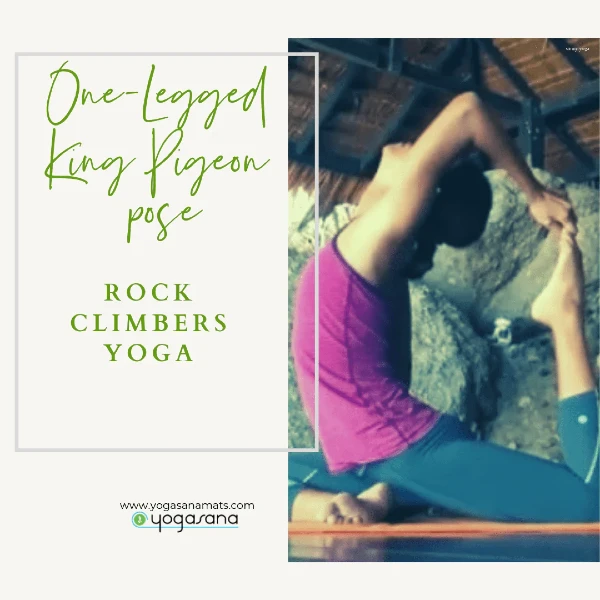
One-Legged King Pigeon Pose is a deep backbend that puffs the chest. Lift your left leg into the air. Bend that leg and bring the knee toward your left wrist, forming an angle through your left shin and thigh bone. Inch your hips back by turning your right toes under and picking up your hips and setting them down evenly. Come down onto your elbows or forehead, and relax into a forward fold over your left shin. Keep some energy pulling inward as you release the big muscles of your left hip. Stay for 1–5 minutes. Release, and take the pose on the other side.
Climbing Benefits:
- Opens outer hips and thighs
- Stretches inner groin, where climbers can be really tight
- Softens the hip flexors of the back leg and will give you space to reach those high foothold
3. Wide-Legged Standing Forward Bend Pose
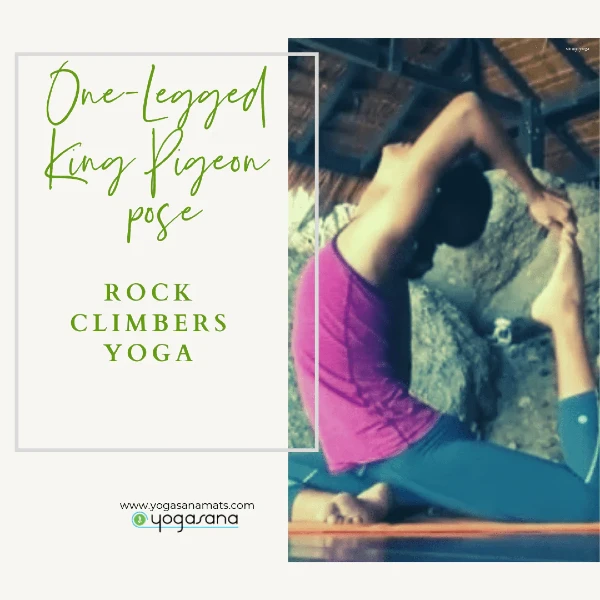
Wide-Legged Forward Bend pose stretches the backs of the legs and the back muscles by standing sideways on your mat with your feet wide apart. Turn your thighs and big toes in slightly. Interlock your fingers at your sacrum. Keep some space between your wrists. Press evenly into the four corners of your feet, fold forward at your hips, and take your arms overhead, sliding them toward the floor. Experiment with turning your palms toward your back (which will open your superficial shoulder muscles and fascia) or turning them out and externally rotating the shoulders. Stay for five breaths. Come up to standing and bring your feet together.
Climbing Benefits:
- Loosens hamstrings
- Opens shoulders
- Finds midline for more stability
- Lengthens the spine
4. Thunderbolt Pose
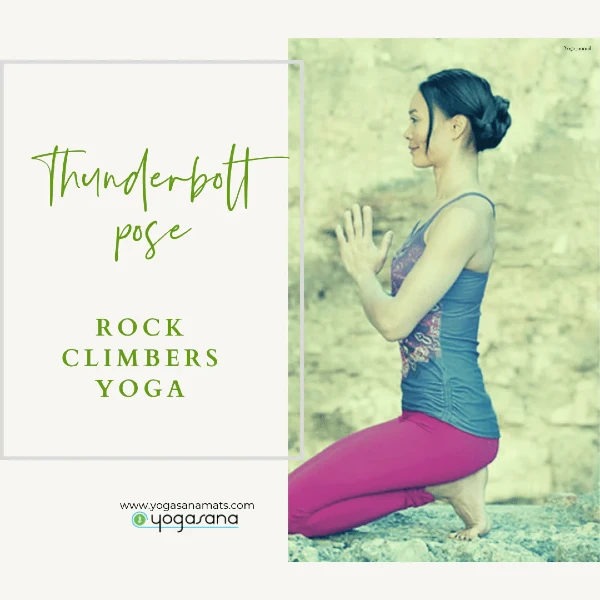
Thunderbolt Pose is a traditional and ancient seated yoga pose that is often used for meditation and yogic breathing exercises. Tuck your toes under (even that stubborn pinky toe), and sit back on your heels. Relax your weight down gradually for 5 breaths. Work up to staying 3 minutes daily. If this feels like too much, lean forward and place your hands on the floor to take some of your weight off your heels.
Climbing Benefits:
- Stretches tired feet
- Opens up tight plantar fascia, as well as the connective tissue and muscles around the calves
5. Tree Pose
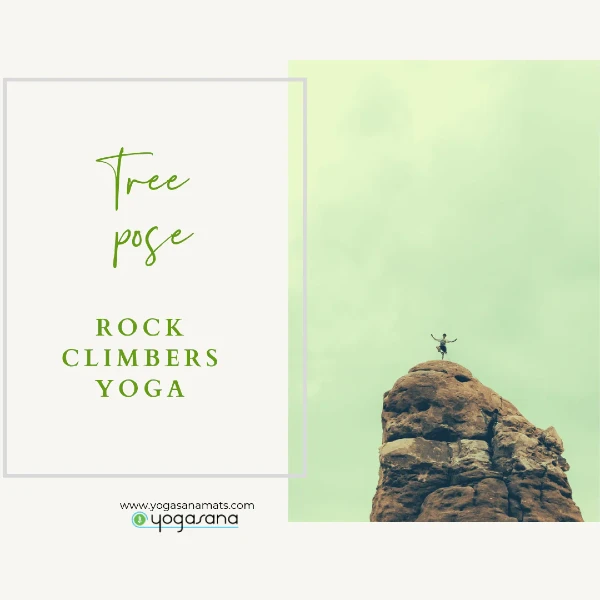
Tree Pose is usually the first standing balance pose that is taught to yoga beginners because it’s the simplest. Shift your body weight onto your left leg and lift your right leg off the floor. Place the sole of your right foot as high on the inner left thigh as you can (above the knee or below the knee, but never on your knee). Open the right hip. Press the foot into the thigh. Feel your midline and press your standing leg into the ground, feel your spine grow long out of this rootedness.
Climbing Benefits:
- Finds your center
- Improves mental focus
- Gains balance
- Opens the hips
6. Mountain Pose![]()
Mountain Pose is the foundation of all standing poses that makes a great starting position. Stand with heels slightly apart, big toes touching. Balance your weight evenly by lifting and spreading your toes and rocking your body on your feet. Lift your kneecaps, strengthen the inner arches of your feet, turn the upper thighs slightly inward, and draw your pubic bone and tailbone toward each other. Lift your upper body without sticking your ribs out, stretch your shoulder blades back, and drop your shoulders. Drop and straighten your arms, opening your palms in front of you. Grow tall through the crown of your head, chin parallel to the floor. Allow your tongue to be flat on the floor of your mouth. Soften your eyes.
Climbing Benefits:
- Promotes stillness, relaxed strength, and “groundedness”
Yoga Serves As Warm Up And Cool Down for Climbing
A lot of climbers, the standard method of their warming up and cooling down is walking or climbing in easy terrain. It is best recommended before and after climbing, it’s best to gently mobilize your body through activities like yoga as a way of being ready and adjusting your body and nervous system for the activity. Yoga is more than just stretching, it’s about being more in tune with your body, using your body better when climbing and feeling better right after the climb.
Climbing and Yoga Go Together
Yoga improves climbing. It will make you stronger, more confident, more stable and more connected with every movement. A feeling of perfect zen as you flow through each movement. Yoga compliments climbing perfectly, it helps you enhance your flexibility, balance, core, strength, endurance, breathing and focus. Every single climber can benefit from these skills. Yoga also helps you achieve these skills in a way that is gentle and healing to your body while maintaining lean muscles which are ideal for climbing.
